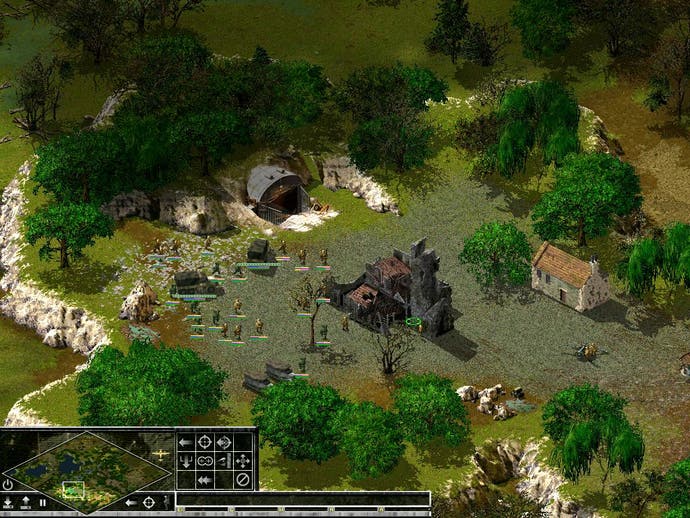Sudden Strike II
A hands-on look at the real-time strategy sequel
German publisher CDV launched its blitzkrieg against overseas markets in style with the Europe-wide release of chart topping strategy game Sudden Strike back at the tail end of 2000. With a vaguely realistic World War II setting, support for up to a thousand units in a single map and none of the usual resource gathering and base building elements that govern most real-time strategy games, it was a breath of fresh air for the stale genre.

Same Again Please
It's no surprise then that a sequel is on the way, with Sudden Strike II already available in Germany and due for release elsewhere later in the summer. Is it as groundbreaking as the original? In a word .. no.
Sudden Strike II is basically more of the same, with some slight tweaks. For example, the units have been rebalanced and damage is even more realistic than it was in the first game. Your men drop dead with frightening ease, and if you're not careful you can lose practically your entire army in the space of a few seconds. On the bright side, you can at least give orders while the game is paused, giving you some time to think about what you're doing instead of charging in and getting cut to pieces before you can react.
The sequel uses the same engine as the original Sudden Strike, so on the graphics front it's hard to spot any real difference between the two games as well. New terrain features and units have been added to bolster the variety already on offer, and in some maps you can march your men through underground tunnels to pop out behind enemy lines, but there's little here to really surprise fans of the series. The biggest change is probably the replacement of the French army by the Japanese, opening up a campaign of jungle warfare in the Pacific and providing many of the 50 new units that are available in the sequel.

Are You Experienced?
Players can also now take direct control of boats, railways and planes to ferry their men around the map. One of the early campaign missions we played involved capturing an enemy airfield and manning the planes with your own crew to carry your army across a river to attack another enemy stronghold.
Meanwhile a basic experience system has been added to the sequel, so that as your men gain combat experience their movement speed, range of vision and firing accuracy will gradually increase. Keeping them alive long enough to notice any improvement is easier said than done though. The game is still bewilderingly complex and incredibly difficult, and even on the euphemistically named Easy setting I struggled to win any of the missions.
The combination of huge numbers of units and realistic damage means that just keeping your men in one piece is a full time job. One minute you could be marching through a forest unmolested, the next machinegun fire and mortar shells are hitting you from all sides and your forward scouts are dropping like flies. Battles are less a case of blitzkrieg than slowly inching your way forward pixel by pixel, with spare trucks and cannon fodder pushed out front to warn you in advance of any enemy defensive positions.
Conclusion
Sudden Strike II is more of a stand-alone mission pack than a sequel, with the same two year old graphics and precious few new ideas to bring to the table. If you loved the original and were looking for more of the same, then this is probably just what you wanted. There are five new campaigns to sink your teeth into, one for each army, and more than fifty missions in total, including interpretations of real battles such as Operation Market Garden. But if the first game wasn't your cup of tea or if, like me, you just found it too damn difficult, then the sequel isn't going to do anything to change your mind.

